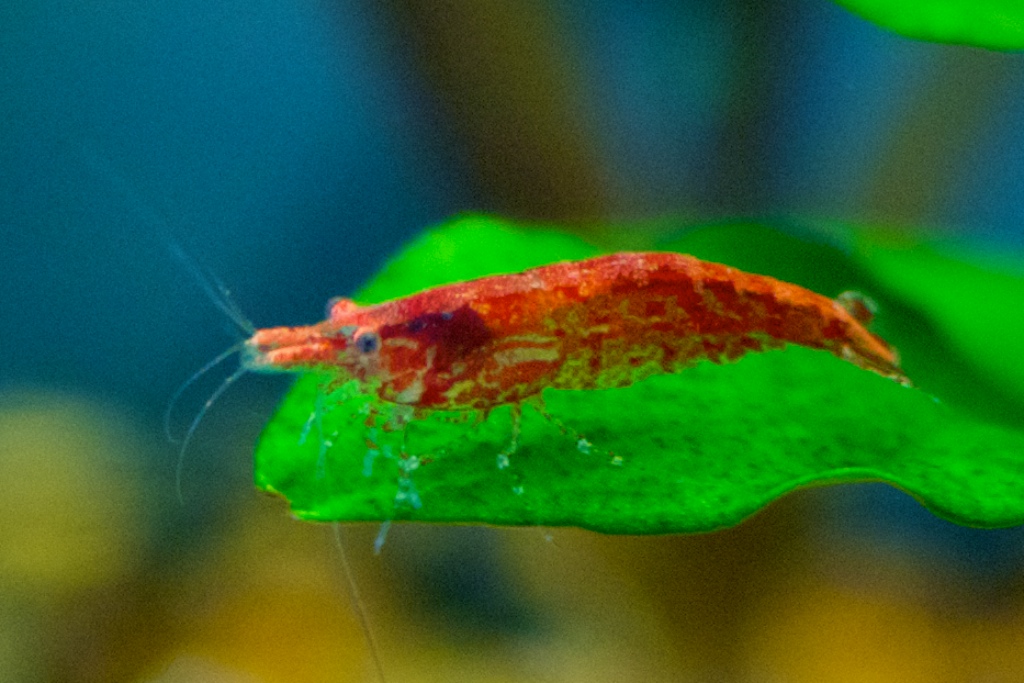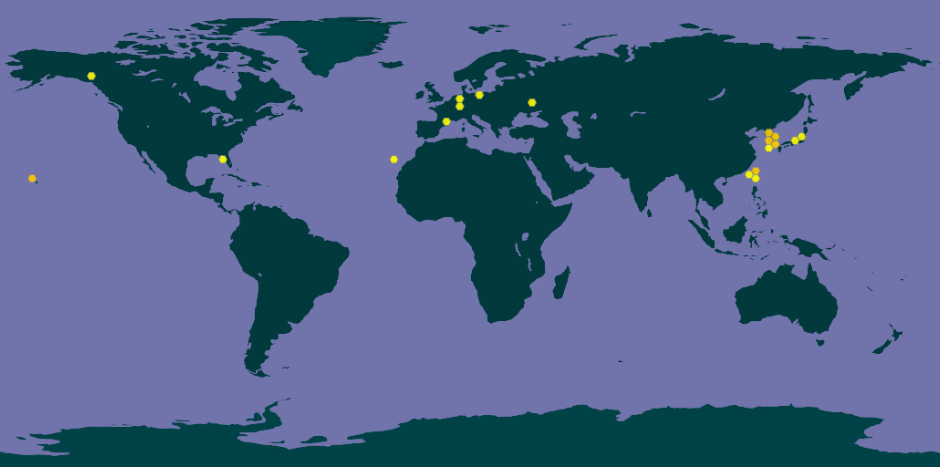Neocaridina davidi (Bouvier, 1904)
Cherry shrimp

| Kingdom | Animalia |
| Phylum | Arthropoda |
| Class | Malacostraca |
| Order | Decapoda |
| Family | Atyidae |
| Genus | Neocaridina |
| Species | Neocaridina davidi (Bouvier, 1904) |
Listen to the SONIFIED SPECIES

Known records of this species

Taxon Description
Neocaridina davidi is a freshwater shrimp originating from eastern China and northern Taiwan and introduced in the rest of Taiwan, Japan, and Hawaii, which is commonly kept in aquaria. The natural coloration of the shrimp is green-brown, though a wide variety of color morphs exist, including red, yellow, orange, green, blue, violet and black shrimp. Full-grown shrimp reach about 4 centimetres (1.6 in) long. N. davidi shrimp are omnivores that may live 1–2 years. These shrimps have previously been classified as Neocaridina heteropoda and Neocaridina denticulata sinensis, however are now known as Neocaridina davidi which is based on the oldest known published description of the species.
Behavior
N. davidi is a non-aggressive shrimp. They are active throughout the day and can be seen grazing on biofilm, aquarium décor or the sides of the tank, hunting detritus among the gravel, and sometimes even mating. Periodically, a shrimp will shed its exoskeleton, leaving an empty white ghost of itself caught in the plants or drifting around the tank. Juvenile shrimp will molt more frequently, as they must shed their exoskeleton as they grow. This discarded exoskeleton should be left in the tank, as the shrimp will eat it to recover the valuable minerals it contains. Pregnant N. davidi shrimp tend to hide in the dark. If they feel endangered by predators, they will abandon their eggs. They need an environment with wood or plants such as Java moss in which to hide themselves and their babies. When they are carrying the eggs under their bodies, they can be witnessed circulating water over the eggs with their pleopods (swimming legs) to ensure good health.
Sexing
Neocaridina davidi have noticeable sexual dimorphism. The male is smaller and usually less colorful than the female. The male’s tail, not being needed to carry eggs, is narrower. The female is larger and usually displays a richer, more opaque coloration, however selective breeding can produce males with similar quality of coloration. On the upper section of the female’s body, on the “shoulder”, the developing eggs on the ovaries may be seen in more transparent individuals. The color of these eggs will depend on the breed of individual shrimp. The shape of the ovaries drapes across both sides of the shrimp, giving rise to the nickname “saddle”. The presence of a “saddle” indicates a female that is likely ready to mate.